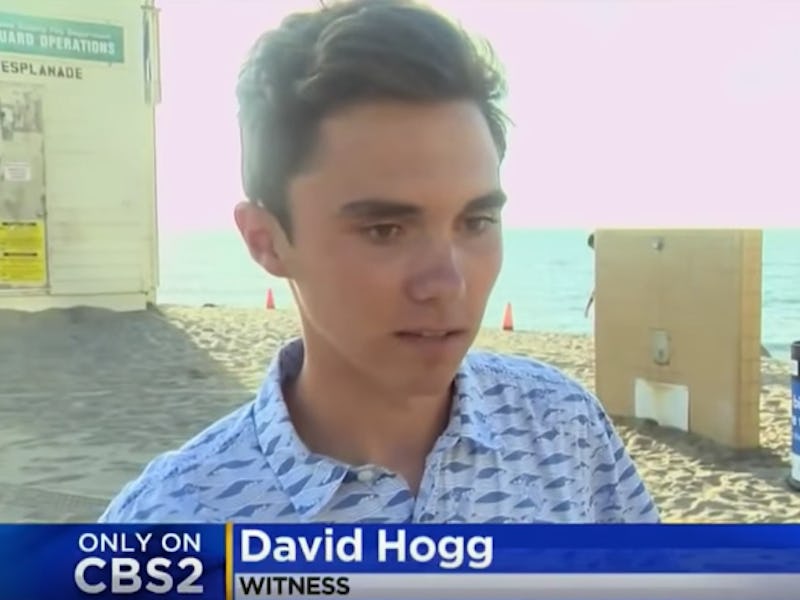YouTube Says David Hogg "Crisis Actor" Video Should Never Have Been Trending
“We are working to improve our systems moving forward,” YouTube said.

A YouTube video implying that Parkland, Florida, shooting survivor David Hogg is a “crisis actor” topped YouTube’s trending section early Wednesday. The video, which contributed to a clearly false conspiracy narrative about the 17-year-old high school senior, has since been taken down for violating YouTube’s anti-harassment and bullying policies.
“This video should never have appeared in Trending,” a YouTube spokesperson told Inverse. The trending tab is curated by algorithms that account for a variety of factors, including view count, rate of growth, and the age of the video. The contents of the trending section are different across geographical locations. Because of the sheer quantity of trending lists worldwide, using employees to create trending lists would require a lot of human labor.
It’s easy to see how the YouTube algorithm missed the pernicious nature of the video in question. It was nothing more than a local news clip about a crotchety lifeguard accosting a few teenagers, and it just so happened to feature David Hogg, a witness to the event.
“Because the video contained footage from an authoritative news source, our system misclassified it,” according to the YouTube spokesperson.
While the content of the video itself didn’t violate YouTube’s anti-harassment and bullying policies, the description, which read “DAVID HOGG THE ACTOR….,” was a clear violation because it constituted deliberate defamation. Conspiracy theorists latched on to the video as proof that Hogg couldn’t be a high school student in Florida because he appeared in a news broadcast filmed in August 2017 in California. For anyone viewing the video, YouTube would also recommend similar conspiracy videos that featured clips of Hogg stumbling in news interviews, with the uploader writing in the description that Hogg “can’t remember his lines.”
“As soon as we became aware of the video, we removed it from Trending and from YouTube for violating our policies,” the spokesperson said.
The same video was posted by multiple other YouTube accounts implying that Hogg is an actor, and at least two are still on YouTube at the time of writing.
It’s a pretty high bar to expect YouTube’s algorithm to detect subtle implications that are entirely unrelated to the posted video content. Still, the video was viewed by more than 200,000 people before it was taken down from the video platform, and that kind of widespread attention is what allows conspiracy theories to flourish and infect the public discourse.
The video had also been used as “evidence” that Hogg is a crisis actor in a Facebook post that had more than 111,000 shares as of Tuesday afternoon.
Clearly, YouTube as a platform bears some responsibility in curtailing disinformation campaigns, and their actions to take down the video prove this. But conspiracy theories like this one pose a particularly challenging problem for YouTube: How do you regulate content that isn’t clearly objectionable, but nonetheless harmful?
“We are working to improve our systems moving forward,” the YouTube spokesperson said.